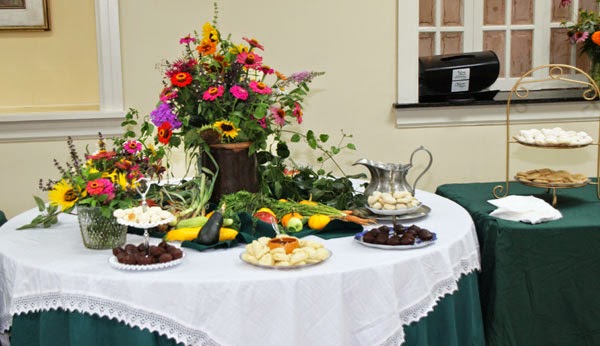 |
| Dried Apple-Zucchini Pie |
Dried Apple-Zucchini Pie
4 cups of dried apples (we got ours from the Amish Store)
2 cups thinly-sliced zucchini
1 1/2 cups apple juice or water
Juice of 1/2 lemon
3/4 cup sugar
1 teaspoon cinnamon
2 tablespoons flour
2 tablespoons butter
2 rolled-out pie crusts
Combine the apples and apple juice or water and bring to a boil. Reduce heat, add the zucchini slices and simmer for 15 minutes. Remove from heat and let cool for 1 hour.
Preheat oven to 375 degrees F.
Add the lemon juice, sugar, cinnamon and flour to the apple-zucchini mixture and stir to dissolve sugar.
Line a pie plate with one rolled-out pie crust, then fill with the apple-zucchini mixture. Dot the top with butter. Moisten the edges of the pie crust, then place the second crust on top and crimp to seal the edges.
Brush the top of the pie crust with half and half or milk, then sprinkle the top with sugar. Cut slits for the steam to escape. Bake for about 50 minutes, or until the top is golden brown. Let pie sit for about an hour before serving.

















































